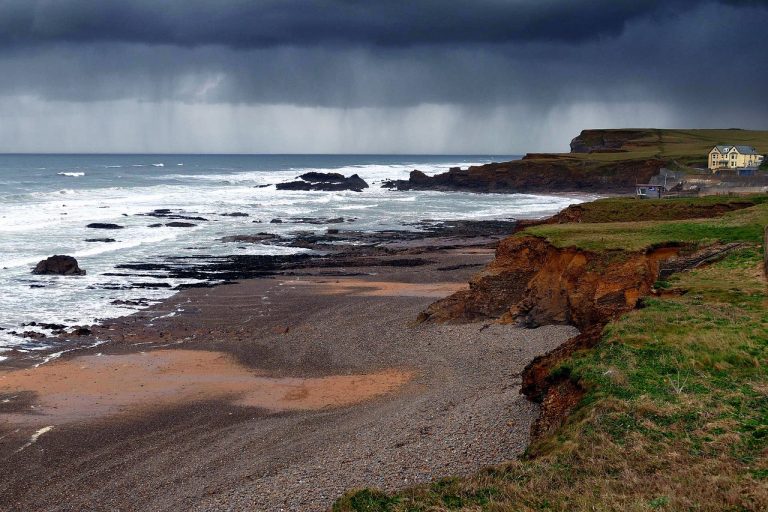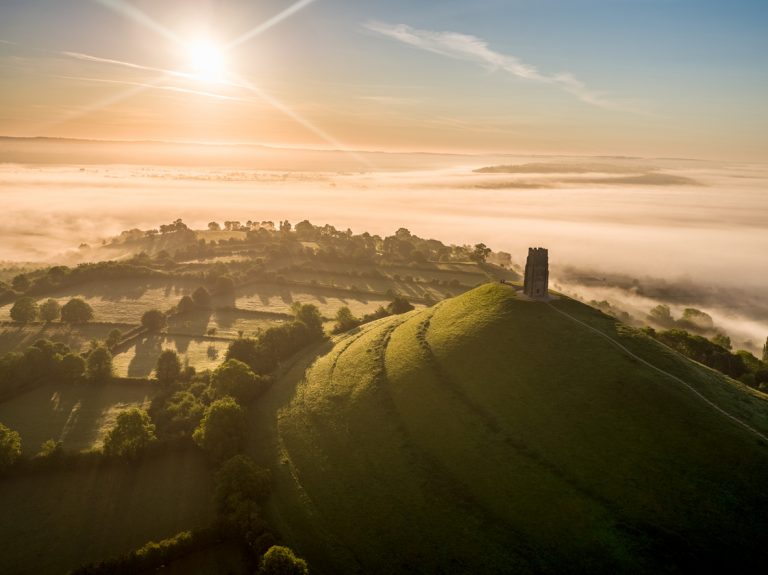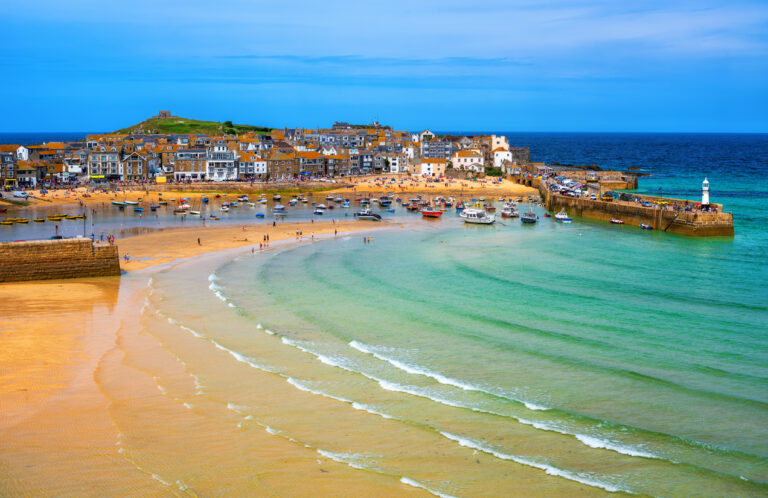18 things to do in St Austell, Cornwall (2024 guide)
If you’re looking for the best things to do in St Austell, this blog post has you covered!
One of the biggest towns in Cornwall, St Austell sits at the heart of the Cornish clay mining industry, which has caused its culture to grow and expand over the centuries.
While the town centre’s not as quaint as some other places in the region, there’s a lot of history to tap into and it’s one of the best places in Cornwall to engage in local life.
Plus, it sits a stone’s throw from the English Riviera, which is home to some of the best beaches in the region.
It’s also in proximity to bucket-list attractions like the Eden Project and the Lost Gardens of Heligan, along with the fascinating town of Charlestown!
Thanks to St Austell’s wide range of restaurants and hotels – many of which have reasonable prices compared to other places in Cornwall – it’s an excellent place to stay, as you’ll be in close proximity to many of the Duchy’s best things to do.
I’ve visited St Austell frequently on my many trips to Cornwall (I’m part-Cornish and live in Devon, the next county along, so I’m always popping over the River Tamar and exploring different parts of Cornwall!), and have put together this guide on exactly what you need to do and see while you’re in town.
So, what are the main attractions and activities in St Austell? Let’s delve into them!
Best Things To Do in St Austell
The best things to do in St Austell include walking around the historic town centre, learning about the China clay industry, visiting the beaches on the Cornish Riviera and seeing nearby attractions like the Eden Project, the Lost Gardens of Heligan and Charlestown.
St Austell Market House

If you’re visiting St Austell, one of the places you absolutely have to visit is the Market House – especially if you’re a sucker for history.
This building is a Grade II listed architectural beauty that was first built in 1844.
The house is made up of two market halls and a town hall is known as being the ‘jewel in the crown’ of St Austell.
It’s managed by volunteers and showcases local creative talent, including gaming events, makers markets and paranormal events with international mediums!
If you’re looking for some entertainment and want a fun local activity while you’re in town, then I’d recommend checking out their schedule.
St Austell Town Museum
If museums are your thing, the St Austell Town Museum is located within the Market House.
As it’s located in the old gaol of the building, you’ll be able to see the cells as they were back in the 1800s, along with exhibitions all about the town’s history.
I’ve always loved chatting to the volunteers here – their passion shines through as they talk you through all the old artifacts and photos of their town.
Cornwall Football Golf Park
When we say there is something for everyone in St Austell, we really mean it!
Along with all the historical sites, if you’re looking for activities and fun things to do near St Austell then look no further than the Cornwall Football Golf Park.
It’s quite literally a giant golf course where you follow the normal rules of golf – the only difference is that instead of using a club and golf ball, you use your feet and a football!
It’s great fun for all the family, and so close to St Austell you can’t say no!
Treffy Viaduct
Tired after a game of Football Golf? We’ve got a more chilled activity on the agenda for your next stop!
Dating back to 1842, the Treffy Viaduct is an impressive engineering achievement that was actually the first of its kind in Cornwall.
Sitting high above the trees close to St Austell, it’s used for both a railway and as an aqueduct. It’s not quite the Hogwarts Express, but it’s still pretty mesmerising as you gaze at the 90 feet high structure!
Now a Scheduled Ancient Monument, there’s parking nearby as well as a perfect picnic spot.
St Austell Brewery
Did someone say beer o’clock?! What better way to spend the afternoon than at a brewery drinking delicious, local beer?
The St Austell brewery was founded in 1851 and actually started out as a wine and spirits spot.

This was until Water Hicks (the owner) decided to try out creating his own beer that the tables turned.
If you’re a beer drinker, I’m going to bet that you’ve tried one or two St Austell beers in your lifetime – in the West Country, you’ll find it in most pubs!
Visit the brewery and neighbouring pub to sample some of the most delicious beer Cornwall has to offer.
Pinetum Gardens
When it comes to places to visit in St Austell, we couldn’t leave the Pinetum Gardens off the list.
It’s a place of perfect serenity surrounded by the most lovely garden scenery with plants and flowers a-plenty to excite the senses.
At an impressive 30 acres in size, the Pinetum Gardens is one of the country’s largest plant collections.
It’s comprised of 10 themed garden rooms, it’s open in the evenings, and you’ll also be treated to some magnificent champion trees. What’s not to love?
Eden Project
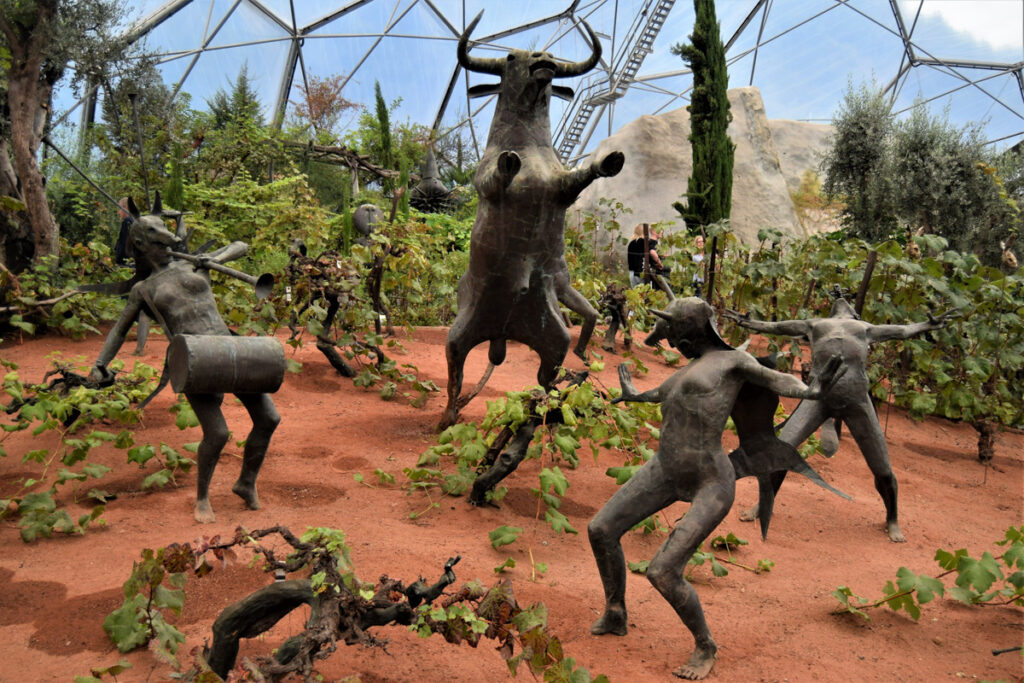
Now, let’s delve into one of the best attractions in Cornwall, and somewhere that has put St Austell on the map!
Built in a giant clay pit, The Eden Project is an enterprise that considers sustainability and eco-friendliness at the core of everything that it does.
The tourist attraction consists of two large biomes; one is dedicated to rainforest flora, and the other to the Mediterranean with Cornish plants surrounding the outside of both.
That means that you can walk through a jungle while you’re here in the Eden Project – there’s even a waterfall!
It’s actually the largest indoor rainforest in the world, perfect if you’re in Cornwall on a rainy day and are seeking indoor attractions.
I used to adore coming here when I was a kid, and I recently returned as an adult. I wasn’t sure if it would be the same, but I can attest that it absolutely was – my boyfriend and I loved it, especially the rainforest biome, which had valuable messages about out impacts on the world around us.
I think it’s a valuable exhibition that immerses people, young and old, into nature that they may not see otherwise, and it educates its visitors on why, despite this nature being very far away, it’s ever-important to protect it.
Tregrehen Garden
Now you’ve seen the world’s largest indoor rainforest, why not head to an outdoor one?
However, first, put any preconceived notions of rainforests behind you. They aren’t all tropical – in fact, there are temperate rainforests all over South West England (my partner wrote an excellent article about the ones in Dartmoor for BBC Travel before).
Tregrehen Garden is a temperate rainforest nestled into the countryside and provides a botanical oasis like no other.
It’s surrounded by hills, trees, and parkland, and is a great place to visit if you need a touch of nature.
Visit in spring and see the wonders it has to offer as the garden comes to life in the season of rebirth.
Cornish Alps
So, we’ve gone from a tropical rainforest, to a temperate rainforest, to… the Alps?! Well, kind of.
A drive north from St Austell will take you to what is known as the Cornish Alps – a collection of beautiful sharp peaks that are reminiscent of Cornwall’s porcelain-making days.
Don’t expect chair lifts and apres ski bars here (the name is a little tongue in cheek), as the name came into being from the unnecessary material dug up when mining for what would eventually be porcelain.
They do genuinely look very much like Alps though!
You can find them by driving along the A391 – Google Maps location here.
Walk the Clay Trails
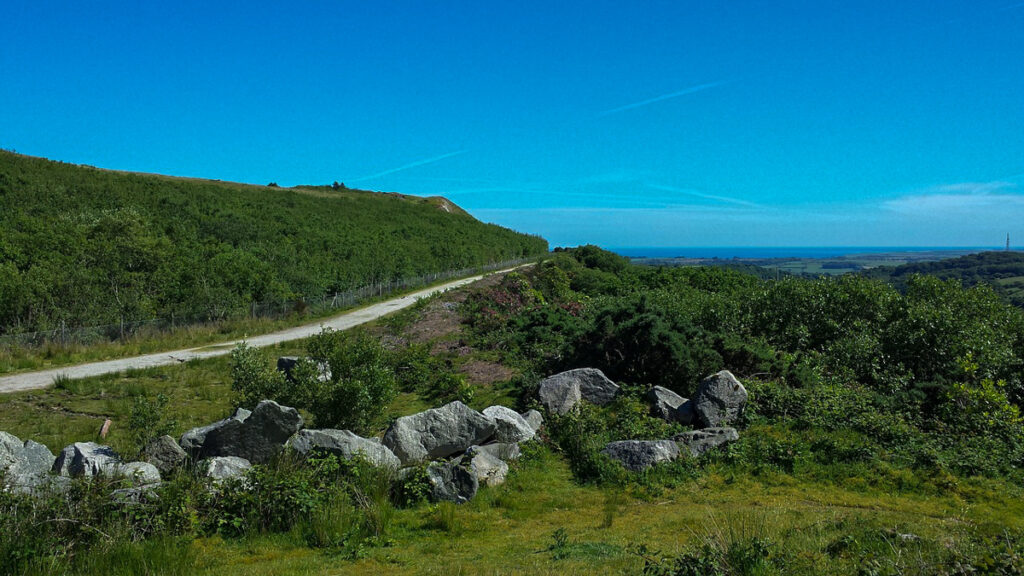
If you want to take in the clay mining industry a little more, try out some of these clay trails, which traverse around the areas where people historically mined for clay (and offer excellent views of the Cornish Alps!).
There are a full range of nature trails available, from short meanders through the countryside (such as Wheal Martyn to St Austell) to longer routes that take in all the biggest sites of the area (like the Carclaze loop).
You can see all the trails here.
Restormel Castle
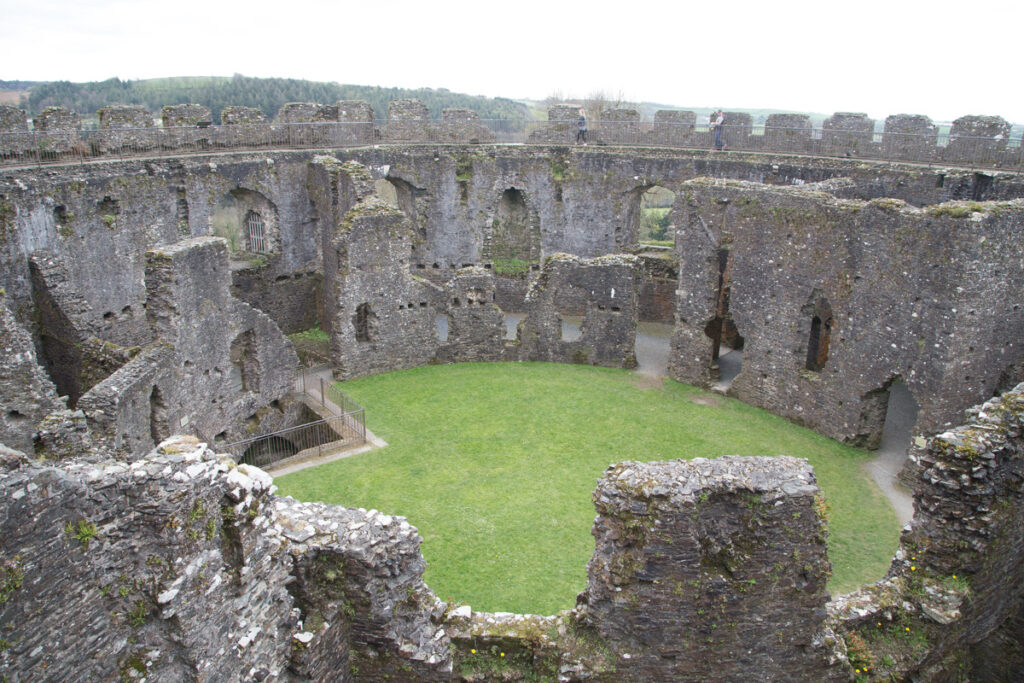
Restormel Castle is a remarkable site and of great importance in Cornish history.
First a defensive structure with its circular structure, the castle then became a retreat for a wealthy Medieval family.
Considering it dates back to the Norman times, parts are remarkably well-preserved and it’s definitely worth visiting when you’re driving around the St Austell region.
A family friendly site, it’s run by the English Heritage, and members can visit free. You can read more about English Heritage membership here.
Wheal Martyn
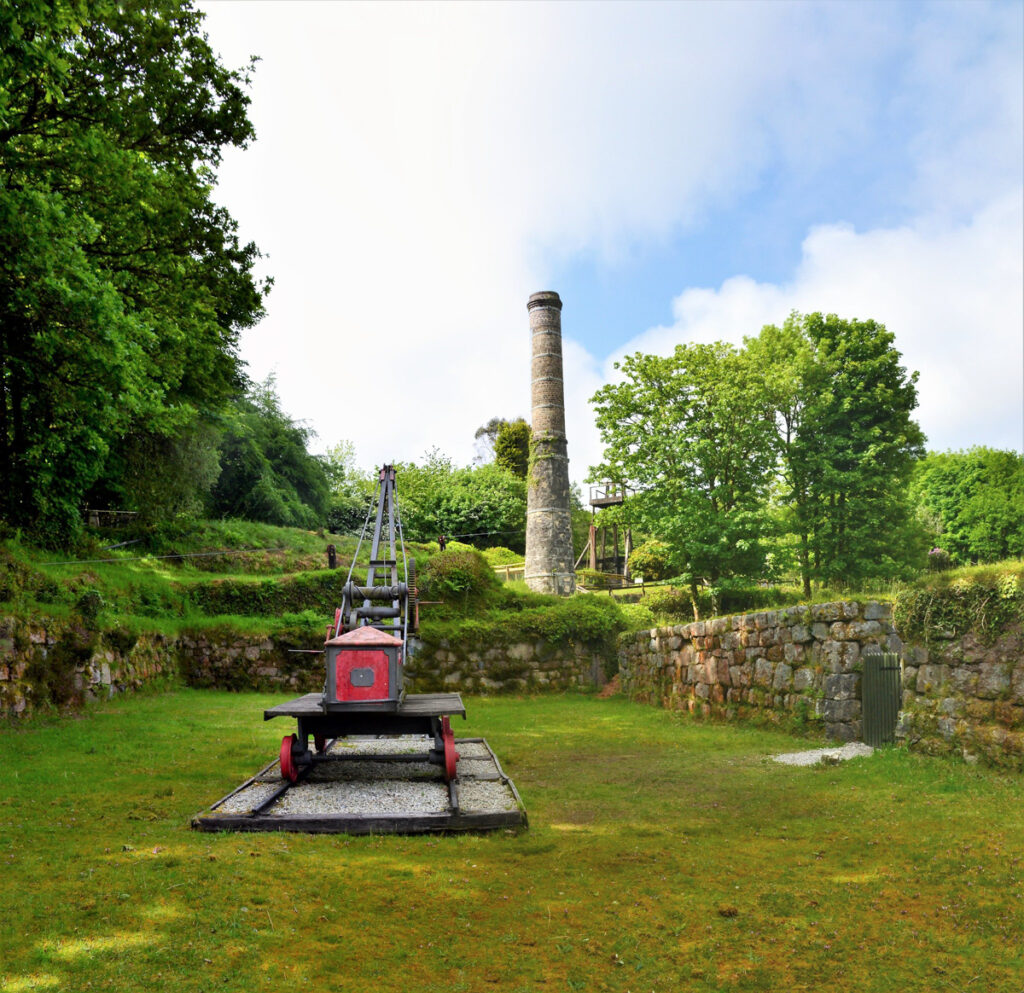
Situated in the China Clay Country Park, Wheal Martyn is a fascinating mine turned museum where you can learn about what equipment was used for China clay extraction from Cornwall’s natural terrain.
With around 26 acres of land to explore, over 200 years of history to discover, and a ticket that gives you access for 12 months, you can’t go wrong.
There’s even a Cornish mythology walk to do!
Luxulyan Valley
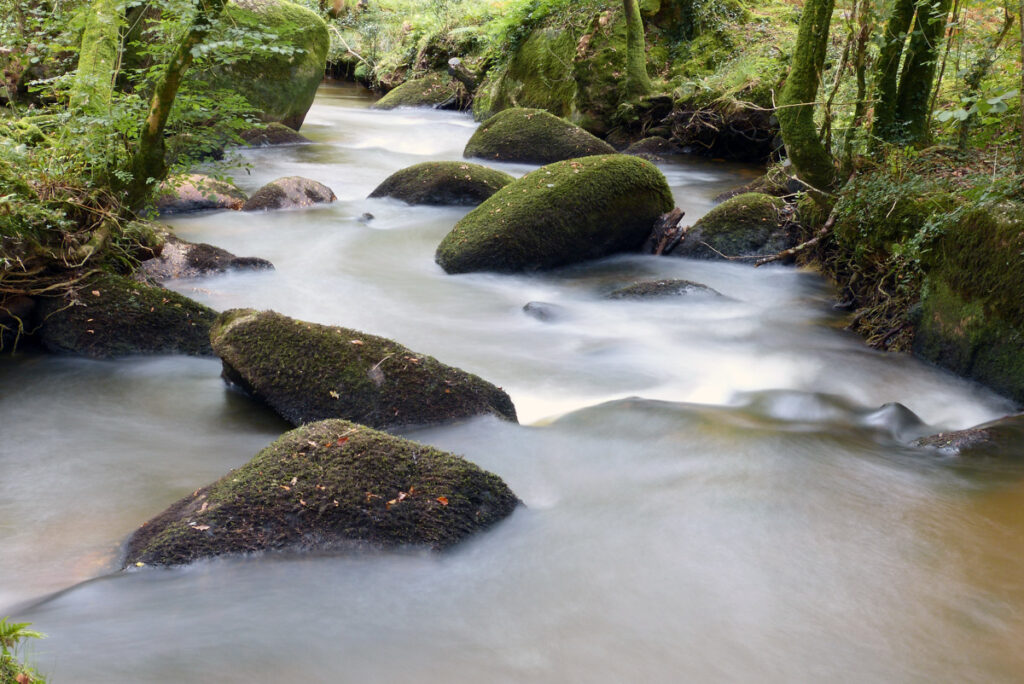
Luxulyan Valley is a beautiful part of the West Devon Mining Landscape World Heritage Site.
It’s a woodland that covers the remains of the 19th-century industrial area and is full of walking trails and events of all kind.
Events like Otter Talks and dog runs are common, but you can take a trip solo and take in the scenery all the same if you’d prefer it.
Cornish Riviera
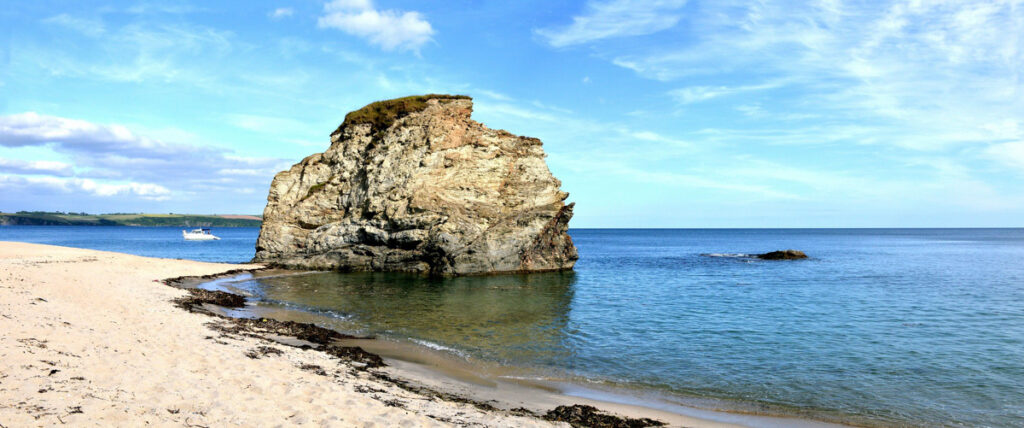
You might have heard of the French Riviera, but have you heard of the Cornish Riviera? I promise, it’s just as gorgeous!
The stunning collection of beaches will have you feeling as if you were in the south of France, especially on a hot, sunny day!
- Porthpean Beach: while a little on the small side, this is without a doubt the best of the Cornish beaches!
- Polkerris Beach: found at the end of a winding lane, this beach was once used by the last Daphne du Maurier!
- Carlyon Bay: a beach separated into three sections with plenty of room for the whole family, this used to be St Austell’s most famous beach due to an old Coliseum that lived here!

If you’re a fan of sweeping views of the sea and want an outdoor activity, why not see some of the English Rivera from the South West Coast Path?
This route begins at the Carlyon Bay Hotel (one of Go South West’s top picks for the St Austell area – read below for more!), and traverses past Charlestown (the ideal place to grab a refreshment!) and towards Porthpean, before making way inland to get back to Charlestown.
You can then follow the same route to the hotel. It’s an easy hike and is 4.5 miles, or around 7.5 kilometres, long.
Charlestown
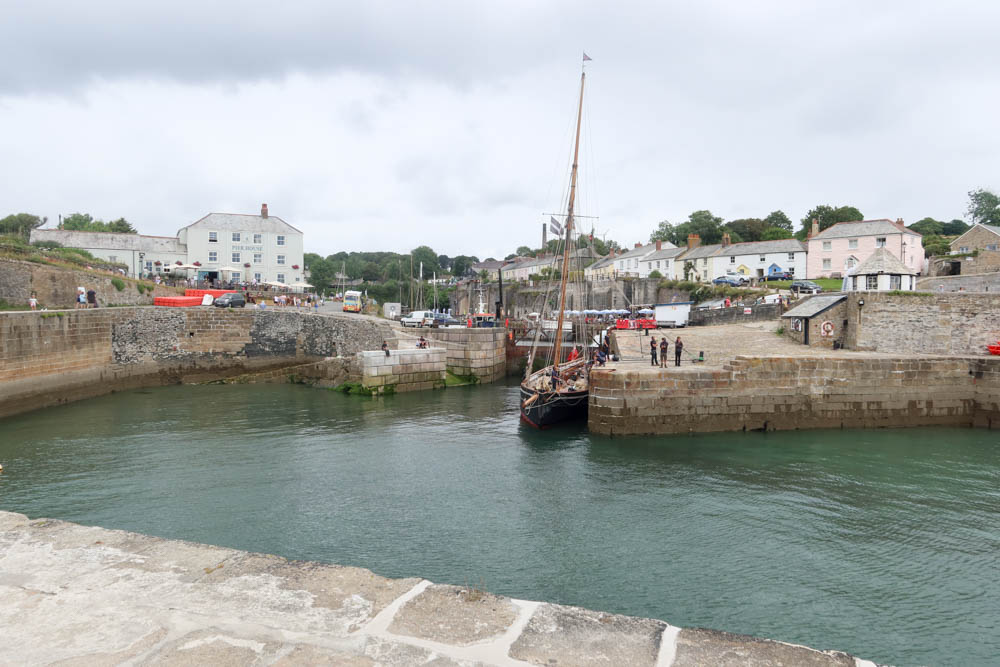
Charlestown UNESCO World Heritage Site is one of the most popular places to visit in Cornwall, so make sure not to miss it.
It’s home to a gorgeous harbour with historic tall ships, loads of filming locations (Poldark was filmed here), boat trips, and the Charlestown Shipwreck Centre/ Treausre Museum which is brimming with historical artefacts. And don’t forget to pick up a bottle of Cornwall’s very own moonshine at the souvenir shop here.
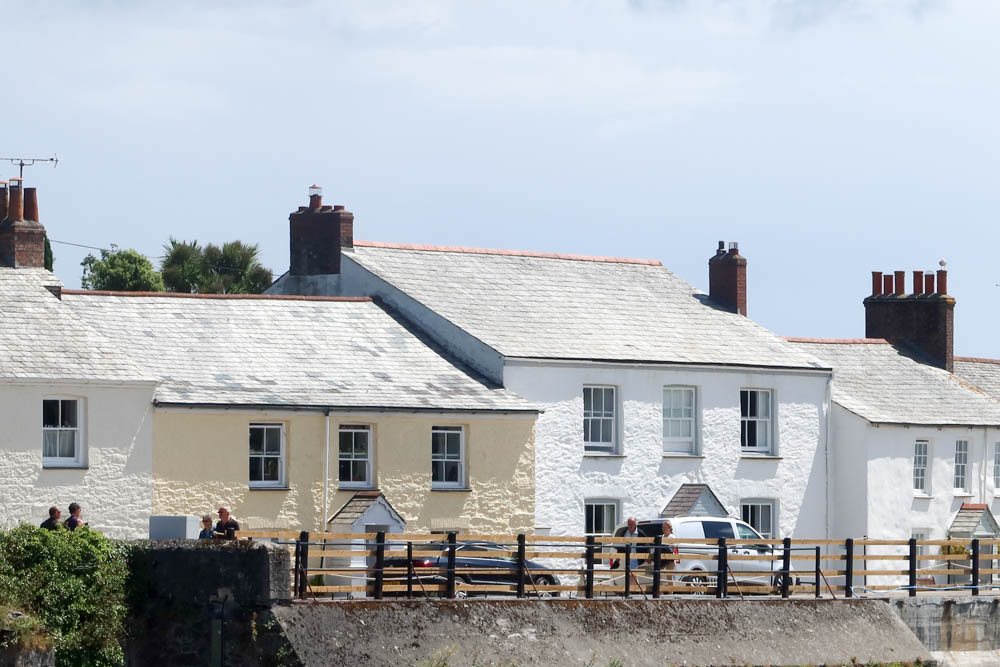
When we last visited Charlestown, we did an interesting walking tour with a Charlestown local, who brought the village to life with interesting anecdotes!
See my full guide to Charlestown here.
Lost Gardens of Heligan

The Lost Gardens of Heligan are just as much a fairytale as they sounds.
Historically part of the Heligan Estate (I’ve traced my Cornish family back on Ancestry and I did have a link way back to John Tremayne, who at one point owned this estate!), the grandeur of the grounds was lost to nature after WWI.
Then, in 1990, they were rediscovered by chance – which started the largest garden restoration project in Europe as they were restored.
There’s a walled garden with plenty of vegetables and herbs to learn about, a jungle section (yes, another terrain in St Austell – it proudly calls itself the “world’s only outdoor jungle”) and a range of pleasure grounds.
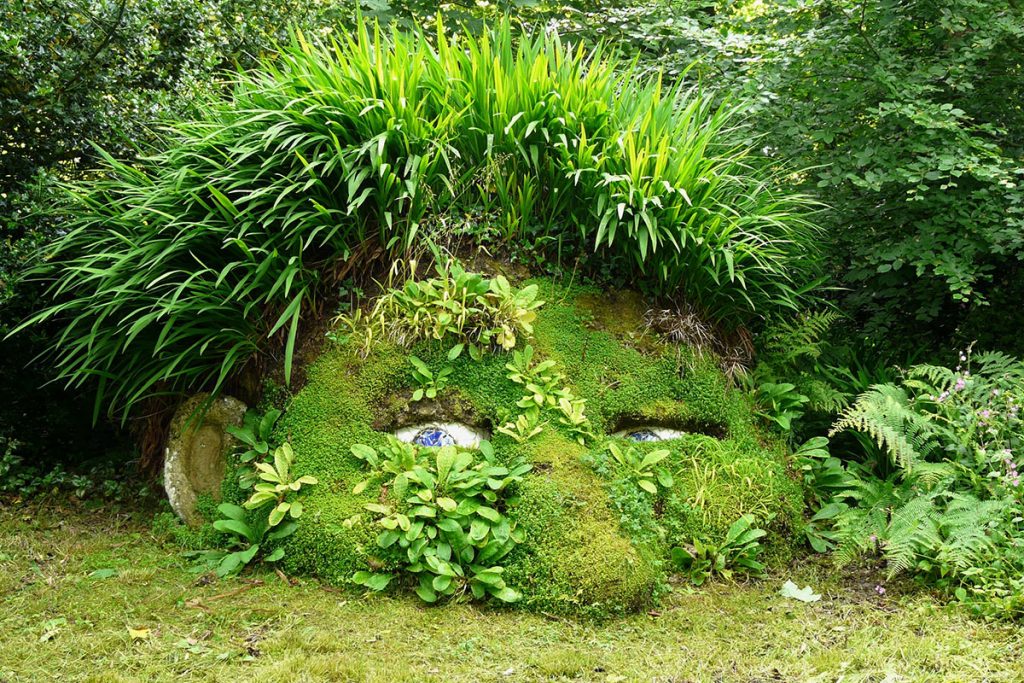
If you like botanical gardens, don’t miss this St Austell highlight!
If you want to visit all the grounds, I’d recommend leaving a few hours (last time I visited, we were there for around three hours all in all). The jungle includes a rope bridge which, while very fun, is immensely popular and not suitable for small kids.
If anyone in your group is mobility-impaired, they might not be able to make it down to the jungle, however, there’s plenty to enjoy closer to the entrance.
Lanhydrock House
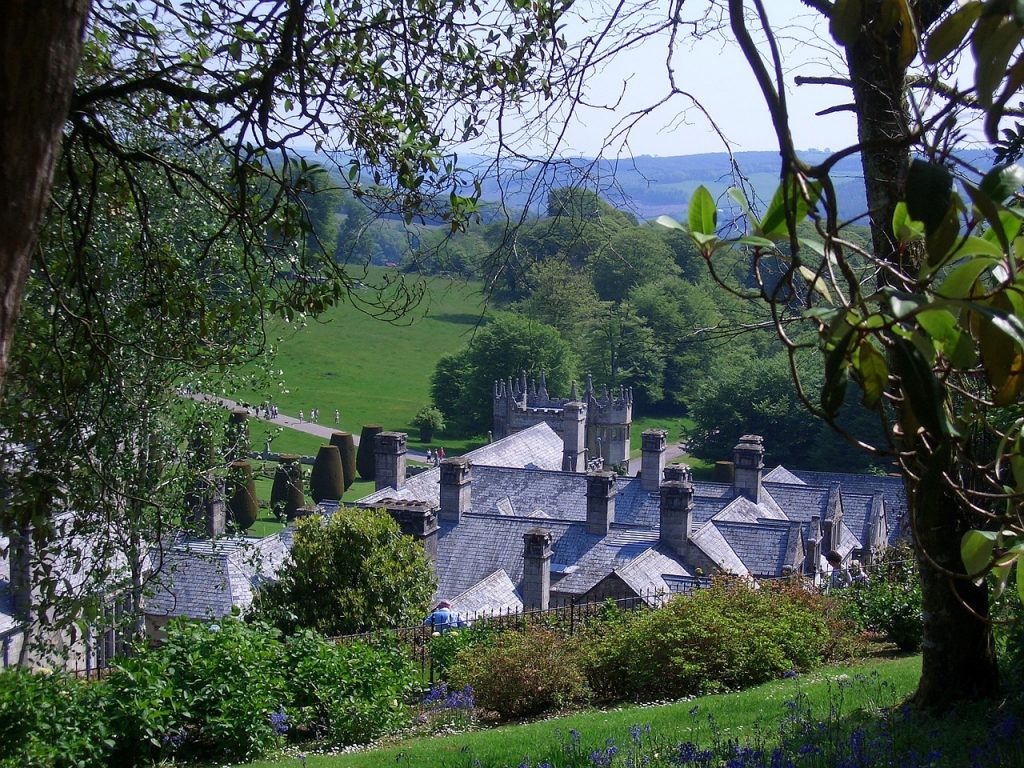
this Victorian country house is much closer to Bodmin, but at less than half an hour drive from St Austell, it’s worth popping in if you’re looking for things to do in the area!
A large manor house nestled in a vast estate, Lanhydrock was first built in the early 17th century. It was home to the Agar-Robartes family for years, but in 1881, most of the building was devestated by a tragic fire – which is why nowadays, it’s a Victorian manor house.
Visit to see the family rooms and servant’s quarters, stroll around the beautiful gardens and explore the larger estate, which predates the mansion.
Visit Fowey
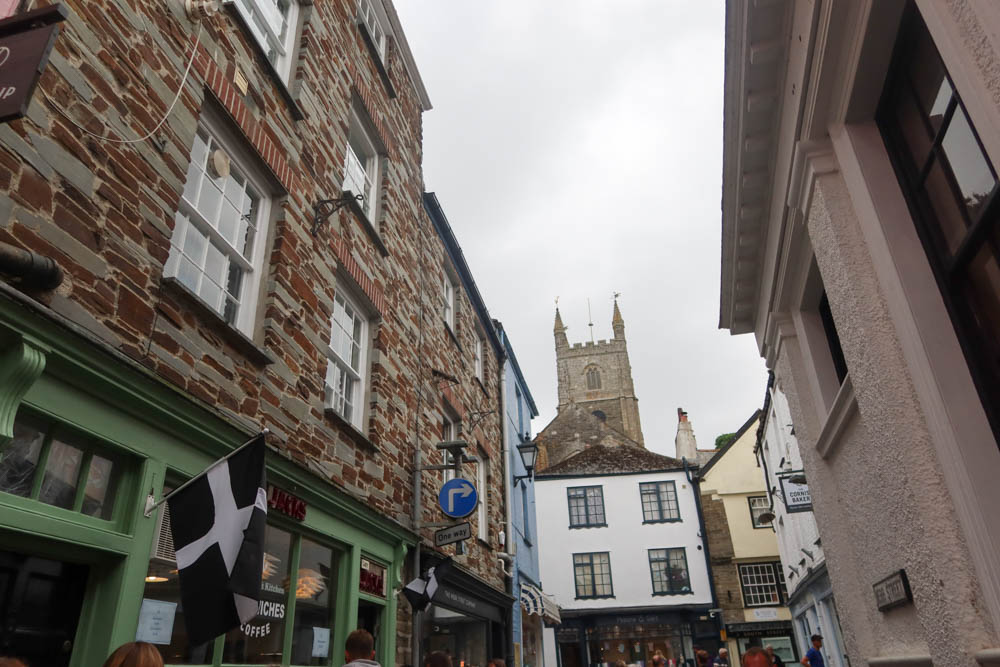
The beautiful town of Fowey is one of my favourites in Cornwall.
Sitting at the mouth of the Fowey River, here you can enjoy both riverside and coastal scenes, the charming buildings of the town (walk down the Esplanade, with a beautiful row of pastel terrace houses – my dad used to live in one of these when he was a toddler!), and enjoy the range of independent shops and restaurants.
The water is a great spot for paddle boarding or taking boat trips – you’ll go past Readymoney Cove and Menabilly, which is where Daphne Du Maurier lived in Cornwall.
See my full guide to Fowey here.
Where to stay in St Austell
St Austell has a range of well-equipped accommodations perfect for families, couples and solo travellers, some of which can be quite budget-friendly (in Cornwall terms!). There are also some luxury hotel options, along with various cottages in surrounding villages and pubs with bedrooms.
White Hart Hotel
This is a perfect choice for a stay in St Austell.
Only five minutes walk from the train station or a free car park if you drive, its location is central and the rooms are set in a beautiful and grand Georgian building.
It also boasts a restaurant and a bar to make sure your whole experience is catered to.
Ivy House Cornwall B&B
If a more personal B&B type accommodation is your thing, check out Ivy House.
With a garden, a shared lounge, and a terrace, it’s a great place to meet other people and enjoy breakfast together.
The Carlyon Bay Hotel and Spa
And finally, the Carlyon Bay Hotel and Spa is the most extravagant and luxurious hotel in St Austell.
Looking like something out of a film, it’s set right on the cliffs of Cornwall with stunning sea views.
Gorgeous rooms, vintage wines, and a swimming pool overlooking the cliffs. You couldn’t ask for more!
St Austell visiting information and FAQs

What is St Austell like in Cornwall?
St Austell is a pleasant town, dating back to the 13th century, with a few interesting historical buildings, plenty of shops to enjoy and lots of local restaurants like the Nepalese Ghurka Restaurant and Cafe Tengo. There are plenty of nearby attractions too!
How far is St Austell from Plymouth?
St Austell is about an hour’s drive (38 miles or 61 kilometres) from Plymouth. To get there, you can follow the A38 over the River Tamar or take a direct train, which takes just under one hour and also calls at Saltash, Liskeard and Par.
Is St Austell Cornwall a nice place to live?
As it’s close to the sea, and with a range of attractions and a good local community spirit, St Austell is a good place to live. It doesn’t have the same charm as some Cornish seaside villages, but also has fewer overtourism problems.
How many pubs does St Austell Brewery own?
St Austell Brewery manages 38 pubs across South West England. Most of these are in Cornwall, but you may find others in Devon, including two in both Plymouth and Exeter. There’s also one in Bath, one in Bristol and one in Lyme Regis in Dorset.
Is St Austell in Devon or Cornwall?
St Austell is in East Cornwall, around 30 miles to the Tamar Bridge which marks the border between Devon and Cornwall. It’s the third biggest town in Cornwall, with a population of 25,447.
Is St Austell north or south Cornwall?
St Austell is in South Cornwall; the town is technically inland but it’s only a mile or so from the coast. It’s close to South Cornwall towns like Fowey, Charlestown and Mevagissey. However, it’s only a 40 minute drive to Newquay on the north coast.
What is St Austell famous for?
St Austell is famous for being the heart of the china clay mining industry, which still takes place today despite other mining in Cornwall terminating. It’s also famous for being home of the Eden Project, one of the most popular Cornwall attractions.
Does St Austell have a beach?
St Austell doesn’t have a town beach, but the town is very close to beautiful sands like Porthpean and Carylon Bay which is considered by many to be one of the best beaches in South Cornwall. There are some lovely coastal walks here!
Is St Austell worth visiting?
With a range of attractions for all ages, including coastal hikes, beaches, museums, breweries and gardens, St Austell is definitely worth a day or two on your Cornwall itinerary. The town isn’t the most beautiful in Cornwall, but it’s interesting enough!
What to do in St Austell when it rains?
There are plenty of things to do in St Austell when it rains!
- Explore the town’s museum
- Go to a production at the old market hall
- Visit the Eden Project
- Enjoy the Wheal Martyn Mine Museum
- Drive to Lanhydrock and see the manor house
All of the best things to do in St Austell!
Whether you want to take in beautiful views of the Cornish coast at St Austell’s coastline, or are looking to learn more about china clay extraction, or just want to explore the best of South Cornwall, St Austell is a fantastic base to enjoy the region!

